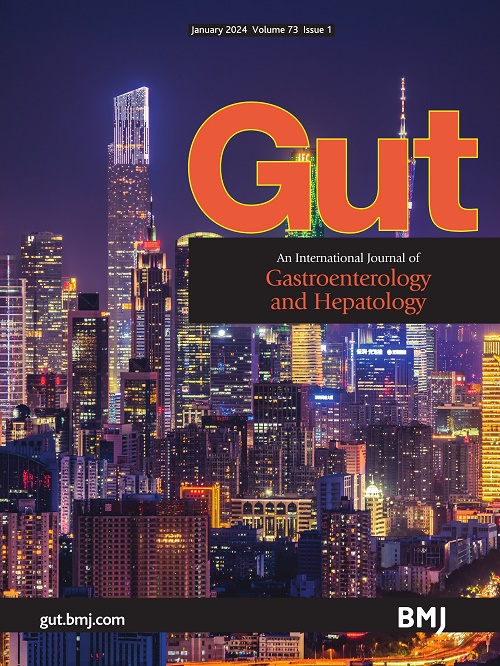Partial cure of chronic hepatitis B: potential implications for HCC surveillance?
IF 25.8
1区 医学
Q1 GASTROENTEROLOGY & HEPATOLOGY
引用次数: 0
Abstract
Surveillance of hepatocellular carcinoma (HCC), via 6-monthly ultrasonography with alpha-fetoprotein testing, is currently recommended for patients with chronic liver disease at risk of HCC. Unlike other liver diseases where HCC occurs almost exclusively in patients with cirrhosis, up to 30% of hepatitis B virus (HBV)-associated HCC occurs in patients without cirrhosis.1 Thus, HCC surveillance is additionally recommended for individuals with non-cirrhotic chronic HBV on reaching a certain age, men >40 years and women >50 years in endemic countries, and as early as the third decade of life for individuals from Africa.2 This recommendation is based on a perceived 0.2% per year HCC incidence which was considered cost-effective for HCC surveillance.3 However, a more recent study found an HCC incidence of 0.4% per year to be cost-effective for surveillance at a higher willingness-to-pay level, with a major influence of surveillance adherence.4 HCC surveillance is underused in clinical practice. A meta-analysis found the rate of HCC surveillance among patients with chronic HBV and no cirrhosis to be 32%.1 Low adherence to HCC surveillance has been attributed to multiple patient-related, provider-related and health system-related barriers, including logistical and budgetary difficulties in administering a surveillance programme that can support large numbers of at-risk patients. Since patient adherence is crucial for the success of any surveillance strategy,4 improvement in risk stratification would allow optimisation of surveillance resources. This may be especially true for patients with inactive chronic HBV without cirrhosis, which comprises up to 70% of patients with chronic HBV5 and …慢性乙型肝炎部分治愈:对肝细胞癌监测的潜在影响?
肝细胞癌(HCC)的监测,通过6个月超声检查和甲胎蛋白检测,目前推荐用于有HCC风险的慢性肝病患者。与其他肝脏疾病(HCC几乎完全发生在肝硬化患者中)不同,高达30%的乙型肝炎病毒(HBV)相关HCC发生在无肝硬化患者中因此,建议非肝硬化慢性HBV患者在达到一定年龄时进行HCC监测,在流行国家,男性40岁,女性50岁,非洲患者早在30岁时就进行HCC监测。该建议是基于每年0.2%的HCC发病率,认为监测HCC具有成本效益然而,最近的一项研究发现,在较高的支付意愿水平下,每年0.4%的HCC发病率对监测具有成本效益,主要影响监测的依从性肝细胞癌监测在临床实践中应用不足。一项荟萃分析发现,慢性HBV合并无肝硬化患者的HCC监测率为32% 1HCC监测依从性低归因于与患者相关、与提供者相关和与卫生系统相关的多种障碍,包括管理可支持大量高危患者的监测计划的后勤和预算困难。由于患者的依从性对任何监测策略的成功都至关重要,因此改善风险分层将使监测资源得到优化。对于无肝硬化的非活动性慢性HBV患者尤其如此,这些患者占慢性HBV患者的70%。
本文章由计算机程序翻译,如有差异,请以英文原文为准。
求助全文
约1分钟内获得全文
求助全文
来源期刊

Gut
医学-胃肠肝病学
CiteScore
45.70
自引率
2.40%
发文量
284
审稿时长
1.5 months
期刊介绍:
Gut is a renowned international journal specializing in gastroenterology and hepatology, known for its high-quality clinical research covering the alimentary tract, liver, biliary tree, and pancreas. It offers authoritative and current coverage across all aspects of gastroenterology and hepatology, featuring articles on emerging disease mechanisms and innovative diagnostic and therapeutic approaches authored by leading experts.
As the flagship journal of BMJ's gastroenterology portfolio, Gut is accompanied by two companion journals: Frontline Gastroenterology, focusing on education and practice-oriented papers, and BMJ Open Gastroenterology for open access original research.
 求助内容:
求助内容: 应助结果提醒方式:
应助结果提醒方式:


